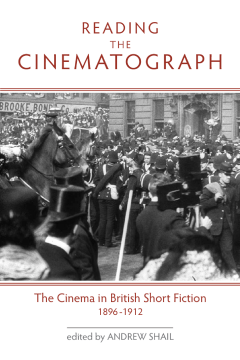
BOOK
Reading the Cinematograph
Dr Andrew Shail | Stephen Bottomore | Dr. Jon Burrows | Stacy Gillis | Tom Gunning | Andrew Higson | Chris O'Rourke | Lise Shapiro Sanders | Dr Andrew Shail | David Trotter
(2015)
Additional Information
Book Details
Abstract
The birth of cinema coincided with the heyday of the short story. This book studies the relationship between popular magazine short stories and the very early British films. It pairs eight intriguing short stories on cinema with eight new essays unveiling the rich documentary value of the original fiction and using the stories as touchstones for a discussion of the popular culture of the period during which cinema first developed. The short stories are by authors ranging from the notable (Rudyard Kipling and Sax Rohmer) to the unknown (Raymond Rayne and Mrs. H.J. Bickle); their endearing tributes to the new cinematograph chart its development from unintentional witness to entertainment institution.
Andrew Shail is Lecturer in Film at Newcastle University.
'As entertaining as it is edifying, Reading the Cinematograph showcases the transformative presence - and role - of cinema in British short fiction at the turn of the twentieth century. Andrew Shail has devised a marvelous format for the occasion; eight stories, reprinted in full and accompanied by their original illustration, followed by valuable critical commentary by eminent film scholars, and framed by Shail's indispensable historical/ critical introduction and sure editorial hand. A work of impeccable and imaginative scholarship...'
Maria DiBattista, Professor of English and Chair of the Film Studies Committee, Princeton University, and author of Fast Talking Dames (Yale UP)
‘… the volume sustains an unbroken fascination with the wider implications of emergent cinematic technologies and modes of representation. It accurately reflects the widely felt cultural significances that were attributed to moving pictures and therefore will be valuable reading for cultural historians of the period as well as historians of cinema.’ (Victorian Studies. Volume 54, No. 5, Summer 2012)
